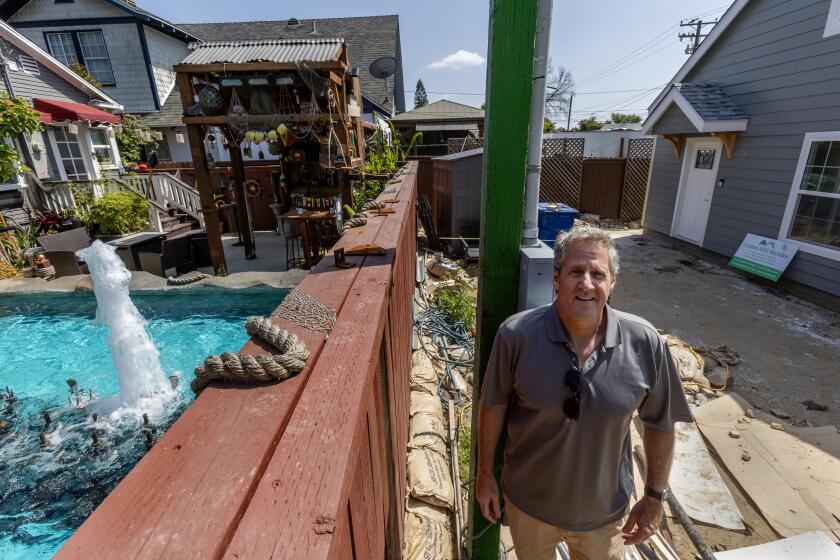Water Agencies Dig Deep for a Cheaper Supply in O.C.
Trying to reduce Orange County’s reliance on expensive imported water, some water agencies are digging deeper into local aquifers to reach a supply of drinking water known for its off-putting color.
The water is safe to drink but has remained largely untapped because of its peculiar color, which resembles iced tea or cola. The agencies send the water through a process that removes the color and makes it indistinguishable from tap water.
The colored water lies beneath clear-water aquifers that have supplied a good deal of Orange County’s water for more than a century. The clear-water aquifers contain 10 million to 40 million acre-feet of water (an acre-foot is enough to serve two typical families for a year). Officials believe there’s an extra 1 million acre-feet of colored water that can be tapped with new wells that reach 2,000 feet underground.
The water gets its color from the remnants of ancient redwood forests.
“It’s very old and high-quality water,” said Ron Wildermuth, spokesman for the Orange County Water District. Officials said tapping the colored water supply serves another important function: Protecting the clear-water aquifers from contamination.
“Over the years, as more and more production occurred in our [clear] aquifer, the pressures in that aquifer have decreased while the pressures in the deep aquifer have remained the same,” said William Mills, general manager of the Orange County Water District. “Now, we have more pressure in the deeper, colored zone and it tends to move upward ... and get into the [clear-water] wells.”
The process of removing the color makes it more expensive than other local water. But officials said it is still cheaper than importing water from the Colorado River and Northern California.
The effort comes amid indications that imported water will be harder to come by because of environmental concerns in Northern California and the Colorado River area. The colored-water projects are just one way agencies are trying to reduce reliance on imported water. The biggest projects are a $600-million plant that would turn sewage into drinking water and a plan to desalinate ocean water.
“As our imported supplies continue to be challenged ... it is just intelligent that we develop all of the local supplies we can,” Wildermuth said.
The Irvine Ranch Water District formally dedicated its deep aquifer treatment system Wednesday. It will treat 7,400 acre-feet of water a year--enough to serve nearly 60,000 people. The water is softer than the Colorado River water imported by the Metropolitan Water District of Southern California because it contains fewer minerals.
“The Colorado River carved the Grand Canyon, so that gives you an idea of the minerals it contains,” said Marilyn Smith, a spokeswoman for the Irvine Ranch Water District .
As water filtration technology has improved, the cost of tapping the colored water has gone down. Special membranes known as nanofilters--essentially acting as a superfine sieve--strain the color molecules from the water.
The Irvine district’s system, built on property leased from Santa Ana, cost $16 million. But savings of $8,600 a day in decreased consumption of imported water means the facility will pay for itself in five years, said Paul Jones, district general manager.
The system, conceived in the early 1990s, was tested at a pilot plant for two years, and then went into full production in February, said Greg Heiertz, director of engineering and planning for the district, which serves all of Irvine and parts of Tustin, Newport Beach, Lake Forest and Orange.
Mesa Consolidated Water District has been using ozone filtration since 1984 to strip the color from 3,500 acre-feet of water a year at a Costa Mesa well, said Diana Leach, the district’s general manager. Two additional wells with the ozone technology are being tested, and once online full-time, will have the capacity to create an extra 12,800 acre-feet.
More to Read
Start your day right
Sign up for Essential California for news, features and recommendations from the L.A. Times and beyond in your inbox six days a week.
You may occasionally receive promotional content from the Los Angeles Times.







